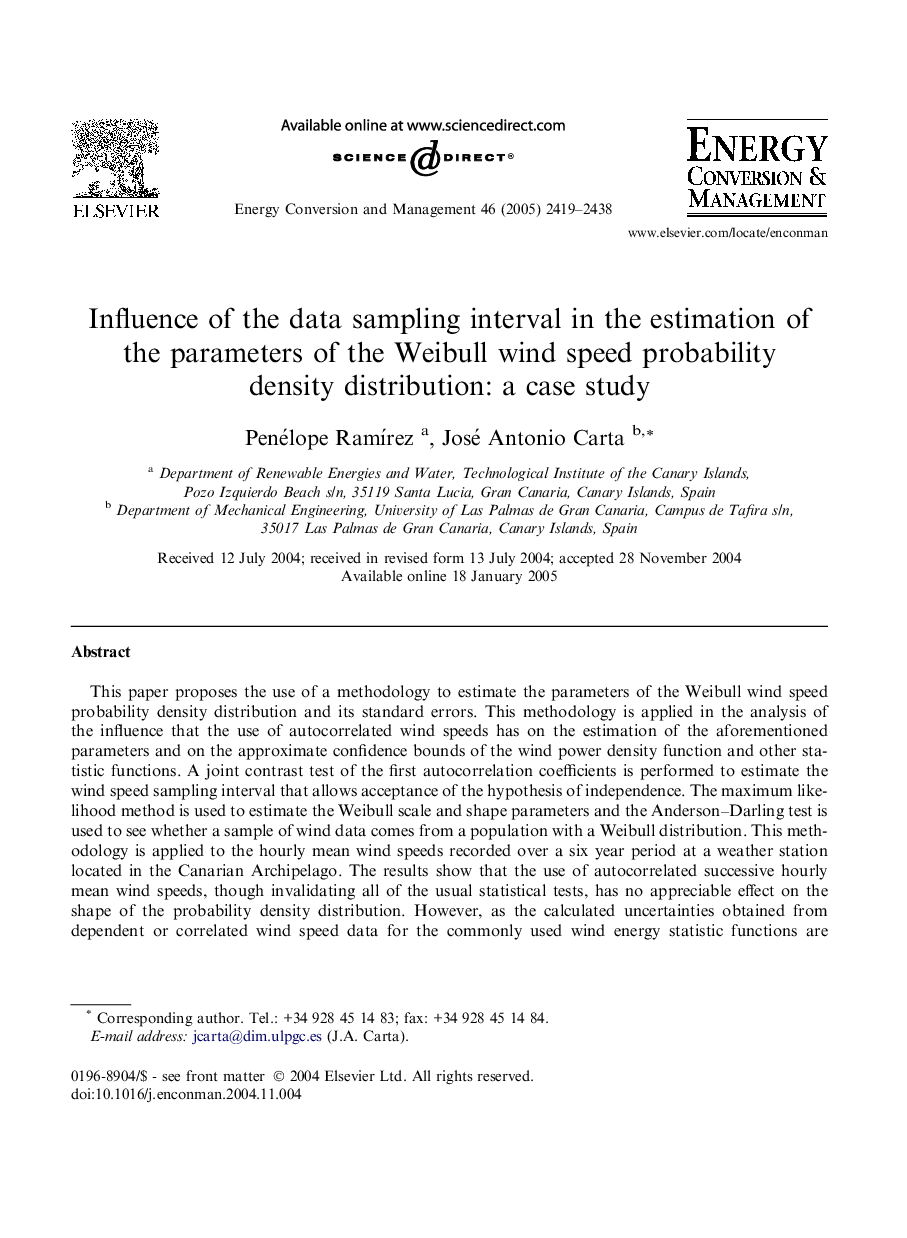| Article ID | Journal | Published Year | Pages | File Type |
|---|---|---|---|---|
| 762734 | Energy Conversion and Management | 2005 | 20 Pages |
This paper proposes the use of a methodology to estimate the parameters of the Weibull wind speed probability density distribution and its standard errors. This methodology is applied in the analysis of the influence that the use of autocorrelated wind speeds has on the estimation of the aforementioned parameters and on the approximate confidence bounds of the wind power density function and other statistic functions. A joint contrast test of the first autocorrelation coefficients is performed to estimate the wind speed sampling interval that allows acceptance of the hypothesis of independence. The maximum likelihood method is used to estimate the Weibull scale and shape parameters and the Anderson–Darling test is used to see whether a sample of wind data comes from a population with a Weibull distribution. This methodology is applied to the hourly mean wind speeds recorded over a six year period at a weather station located in the Canarian Archipelago. The results show that the use of autocorrelated successive hourly mean wind speeds, though invalidating all of the usual statistical tests, has no appreciable effect on the shape of the probability density distribution. However, as the calculated uncertainties obtained from dependent or correlated wind speed data for the commonly used wind energy statistic functions are over-optimistic, the use of a sample of independent wind speed data is recommended in this paper to estimate these uncertainties. Along these lines, a description is given of the algorithm of the procedure proposed in this paper to select this sample.
